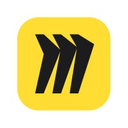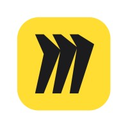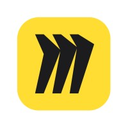Miro vs MockFlow (2025 Comparison)

Miro offers a comprehensive platform for collaboration and project management, with an extensive template library and seamless integrations. It's perfect for teams looking to enhance creativity and streamline workflows.
- Extensive template library for diverse needs.
- Seamless integration with popular tools.
- Robust real-time collaboration features.
- Steep learning curve for new users.
- Interface can feel overwhelming at times.
Free plan?
YesStarting price
$8 per month per member
MockFlow provides a user-friendly interface and robust design tools for wireframing and prototyping. It's an affordable choice for small teams focused on creating detailed UI designs.
- User-friendly interface for beginners.
- Comprehensive design tools for wireframing.
- Affordable pricing for small teams.
- Limited integrations compared to competitors.
- May not scale well for large teams.
Free plan?
YesStarting price
$14 per monthWhat is Miro?
Miro is a versatile online collaborative whiteboard platform designed to facilitate brainstorming, planning, and project management. It offers a wide range of templates and tools that help teams visualize ideas and workflows effectively. Whether you're working remotely or in the office, Miro provides an intuitive interface that makes collaboration seamless. It integrates with popular tools like Slack, Jira, and Google Drive, enhancing productivity and communication. Miro is perfect for teams looking to enhance creativity and streamline processes, making it an essential tool for modern work environments.
What is MockFlow?
MockFlow is a comprehensive wireframing and design tool that simplifies the process of creating and sharing user interface designs. It offers a user-friendly interface with a variety of templates and components, making it easy for designers to bring their ideas to life. MockFlow is particularly beneficial for teams working on web and mobile app projects, as it allows for real-time collaboration and feedback. With its cloud-based platform, you can access your designs from anywhere, ensuring flexibility and efficiency in your design workflow.
Pros and Cons of Miro vs MockFlow

Pros & Cons of Miro
- Miro offers a wide range of templates that cater to various project needs, from brainstorming to project management. This feature saves time and enhances productivity, making it a valuable asset for teams.
- Miro integrates effortlessly with popular tools like Slack, Jira, and Google Drive, enhancing its functionality and making it a versatile choice for teams looking to streamline their workflow.
- Miro's real-time collaboration capabilities allow multiple users to work simultaneously on a project, making it ideal for remote teams and enhancing communication and productivity.
- Miro's extensive features can be overwhelming for new users, requiring time and effort to fully understand and utilize its capabilities. This may be a drawback for teams looking for a quick start.
- The interface can feel cluttered at times, especially for users unfamiliar with its layout. This may hinder productivity and require additional time to navigate effectively.

Pros & Cons of MockFlow
- MockFlow's intuitive interface makes it easy for beginners to get started quickly, reducing the learning curve and allowing users to focus on their design projects without unnecessary complications.
- MockFlow offers a robust suite of design tools for wireframing and prototyping, making it an excellent choice for teams focused on creating detailed UI designs and enhancing their design workflow.
- MockFlow's pricing is competitive, making it an attractive option for small teams and startups looking for a cost-effective solution without compromising on essential design features.
- MockFlow offers fewer integrations compared to competitors, which may limit its functionality and require additional tools to achieve a seamless workflow for teams relying on multiple platforms.
- MockFlow may not scale as effectively for large teams or complex projects, potentially limiting its usefulness for growing businesses or those with extensive design needs.
Miro vs MockFlow: At A Glance
Value to Price
Miro offers a robust set of features that justify its pricing, making it a great investment for teams seeking comprehensive collaboration tools. Its extensive template library and integration capabilities enhance its value. MockFlow, while slightly more affordable, offers excellent value for those focused on wireframing and design. If you're looking for a tool that balances cost with extensive features, Miro is the better choice.
Ease of Use
MockFlow shines in ease of use with its intuitive interface, making it ideal for beginners and those new to design tools. Miro, while user-friendly, has a steeper learning curve due to its extensive features. If you prioritize a straightforward and easy-to-navigate tool, MockFlow is the way to go.
Functionality
Miro excels in functionality, offering a wide range of tools for brainstorming, planning, and project management. Its versatility makes it suitable for various use cases. MockFlow, while focused on design, provides essential features for wireframing and prototyping. If you need a tool with diverse functionalities, Miro is the superior option.
Scalability
Miro is designed to scale with your team, offering features that support growing businesses and large teams. Its ability to handle complex projects makes it a scalable solution. MockFlow, while effective for smaller teams, may not offer the same level of scalability. If scalability is a priority, Miro is the better choice.
Integrations
Miro offers a wide range of integrations with popular tools like Slack, Jira, and Google Drive, enhancing its functionality and making it a versatile choice for teams. MockFlow, while offering integrations, has a more limited selection. If integrations are crucial to your workflow, Miro is the superior option.
Customer Support
Both Miro and MockFlow offer reliable customer support, but Miro provides more comprehensive resources, including tutorials and community forums. MockFlow's support is effective but may not be as extensive. If you value robust customer support, Miro is the better choice.
Security
Miro and MockFlow both prioritize security, offering features like data encryption and secure access controls. Miro's security measures are slightly more advanced, making it a safer choice for sensitive projects. If security is a top concern, Miro is the preferred option.
Miro vs MockFlow: A Detailed Breakdown of Key Features
Real-time Collaboration
Miro excels in real-time collaboration, allowing multiple users to work simultaneously on a project, which is perfect for remote teams. I've found it incredibly useful for brainstorming sessions where everyone can contribute ideas instantly. MockFlow also offers real-time collaboration, but it feels more tailored to design-specific tasks. If your team needs a tool for dynamic collaboration across various projects, Miro is the better choice.
Template Library
Miro's extensive template library is a game-changer for teams looking to streamline their workflow. From mind maps to project timelines, there's a template for every need. I've personally saved hours by using these ready-made templates. MockFlow offers a decent selection, but it's more focused on wireframing and design. If you need a diverse range of templates, Miro is the superior option.
User Interface
MockFlow's user interface is intuitive and easy to navigate, making it ideal for beginners. I appreciate how quickly I can get started on a new project without a steep learning curve. Miro, while user-friendly, offers a more complex interface due to its extensive features. If you prioritize simplicity and ease of use, MockFlow is the way to go.
Design Tools
MockFlow shines in its design tools, offering a comprehensive suite for wireframing and prototyping. I've found it particularly useful for creating detailed UI designs. Miro, while versatile, doesn't focus as heavily on design-specific tools. If your primary need is for advanced design capabilities, MockFlow is the better choice.
Feedback and Comments
Miro's feedback and commenting features are robust, allowing for seamless communication and collaboration. I've found it invaluable for gathering team input and making quick adjustments. MockFlow also offers feedback tools, but they feel more limited in scope. If you need a tool that excels in facilitating team feedback, Miro is the superior option.
Cloud Access
Both Miro and MockFlow offer cloud access, ensuring you can work from anywhere. I've found Miro's cloud capabilities to be slightly more reliable, especially when working on large projects. MockFlow's cloud access is effective, but it may not handle complex projects as smoothly. If cloud reliability is a priority, Miro is the better choice.
Pricing Comparison of Miro and MockFlow
We’ve compiled the pricing tables and highlighted the key features of both Miro and MockFlow to aid in your decision-making process. Let’s explore what each platform has to offer.

Miro Pricing Plans
- Record and share 5 Talktracks for interactive video board walkthroughs.
- Access to 3000+ Miro and community-made templates for quick start.
- Connect with 100+ apps and integrations like Zoom, Slack, Google Drive.
- Try Miro AI with 10 credits per month per team for enhanced productivity.
- 1-click collaborator access with unlimited visitors on public boards.
- Organize and find boards faster with dedicated Spaces for efficiency.
- Recover lost content and content versions with board version history.
- Create and modify with Miro AI - 25 credits per month per member.
- Securely collaborate outside your team with unlimited guests.
- Visualize processes with 2500+ advanced diagramming shapes.
- Import and manage multiple issue types from Jira on our Planner.
- Accelerate workflows with Miro AI - 50 credits per month per member.
- Simplify admin tasks with SCIM, request management, and more.
- Centralized account management and insights for adoption and usage.
- Ensure enterprise-grade security with SSO, domain control, and more.
- Fast-track innovation with Miro AI - 100 credits per month per member.

MockFlow Pricing Plans
- Includes 1 wireframe project with certain page limits.
- Access to 1 flow diagram and 1 UX document.
- Create 1 visual sitemap with all templates available.
- Receive 100 AI credits maximum for personal use.
- Collaborate with unlimited reviewers and on-design comments.
- Translate designs to multiple languages with built-in libraries.
- Generate wireframes and sitemaps from prompts using AI.
- Export designs to PDF, images, and PPT formats.
- Conduct video design meetings and team chat within the editor.
- Integrate with Slack, MS Teams, Trello, and Google Drive.
- Manage licenses and track project activity with analytics.
- Access 1200 AI credits per user per month for design tasks.
- Securely migrate user data and manage licenses efficiently.
- Single Sign-On with Okta, Azure, Google Suite, and OneLogin.
- Offline desktop app for Windows and MacOS with editable files.
- VIP support and compliance for enterprise needs.
Our Rating Methodology
We thoroughly evaluate each collaboration and design tool, focusing on key aspects like functionality, ease of use, and scalability. By analyzing user feedback and testing features, we ensure our recommendations meet diverse needs. Each factor is weighted to provide an accurate final rating, helping you choose the best tool for your projects.
Miro or MockFlow: Which One Matches Your Business Needs?
Choose Miro If You Need ...
- Advanced collaboration features
If you need a tool with advanced collaboration features and extensive integrations, Miro is the ideal choice. Its real-time collaboration capabilities and seamless integration with popular tools make it perfect for dynamic team projects.
- Diverse template library
If you are looking for a tool with a diverse template library to streamline your workflow, Miro is the superior option. Its wide range of templates caters to various project needs, enhancing productivity and efficiency.
Choose MockFlow If You Need ...
- User-friendly design tools
If you are a beginner or small team focused on design, MockFlow is the better choice. Its user-friendly interface and comprehensive design tools make it easy to create detailed UI designs without a steep learning curve.
- Cost-effective solution
If you are looking for a cost-effective solution for wireframing and prototyping, MockFlow is the ideal option. Its affordable pricing and robust design features make it an attractive choice for small teams and startups.
Frequently Asked Questions
 Which tool is better for real-time collaboration?
Which tool is better for real-time collaboration?
 Which tool offers more design-specific features?
Which tool offers more design-specific features?
 Which tool is more affordable for small teams?
Which tool is more affordable for small teams?
 Which tool provides better customer support?
Which tool provides better customer support?
 Which tool is more scalable for growing businesses?
Which tool is more scalable for growing businesses?
 Which tool offers more integrations?
Which tool offers more integrations?

Anastasia Belyh
Anastasia Belyh is a senior tech writer with over 15 years of experience in marketing, sales, and business software. Having worked in investment banking, management consulting, and founded multiple companies, her in-depth knowledge and hands-on expertise make her software reviews authoritative, trustworthy, and highly practical for business decision-makers.



